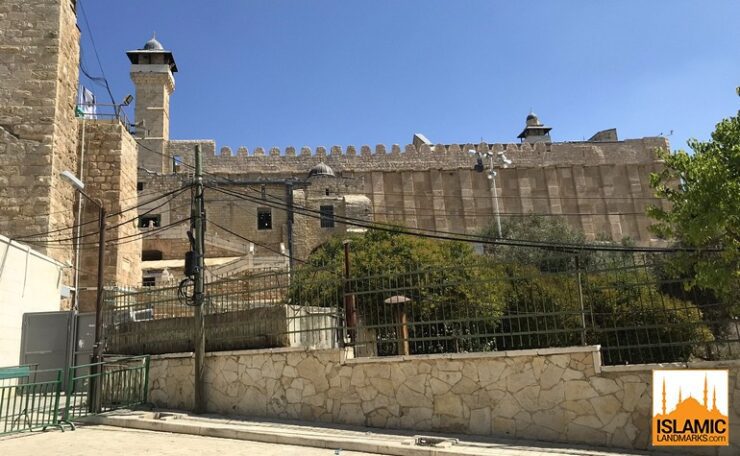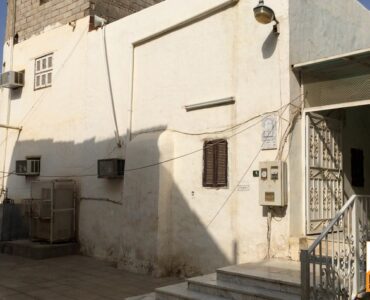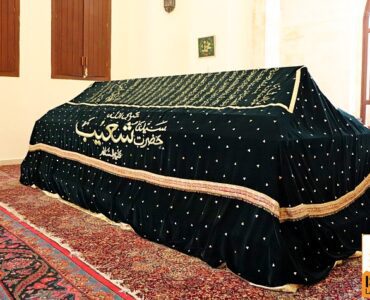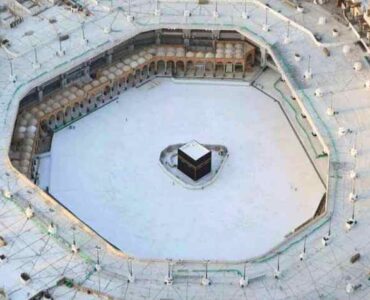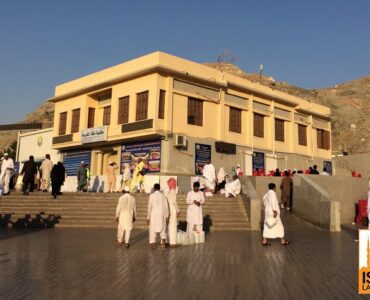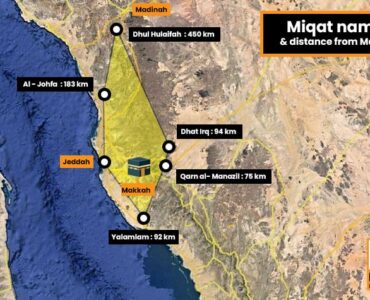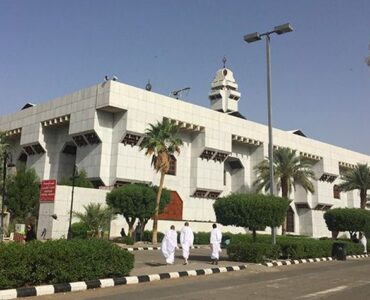Masjid-e-Ebrahim in Hebron is built over a small cemetery where it is commonly believed that four of the most illustrious Prophets and their wives are buried. The four prophets are Ebrahim (عليه السلام), his son Isaaq (عليه السلام), his son Yaqoob (عليه السلام) and his son Yusuf (عليه السلام).
- According to the Book of Genesis in the Bible, the land over which the mosque has been built was bought by Ebrahim (عليه السلام) [Abraham] as a family burial plot after the death of Sarah (عليها السلام) [Sara]. The plot is named as the ‘Cave of Machpelah’ which means cave of the double tombs, referring to the fact that the wives of the Prophets are buried close to them. It is also known as the ‘Cave of the Patriarchs’.
- Some Jews believe that Adam (عليه السلام) and Hawa (عليها السلام) [Eve] are also buried here.
- Almost all of the outer construction which can be seen today was built in the 1st century BC by Herod the Great. Herod’s building did not contain a roof. In 637 CE, the area came under the control of the Muslims and the building was converted to a roofed mosque.


- The Jerusalem geographer al-Muqaddasi, writing in 985 CE described the town as:“In Hebron is a public guest house continuously open, with a cook, a baker and servants in regular attendance. These offer a dish of lentils and olive oil to every poor person who arrives, and it is set before the rich, too, should they wish to partake. Most men express the opinion this is a continuation of the guest house of Abraham, however, it is, in fact from the bequest of the sahabI (companion) of the Prophet Muhammed, Tamim-al Dari and others…. The Amir of Khurasan…has assigned to this charity one thousand dirhams yearly, …al-Shar al-Adil bestowed on it a substantial bequest. At present time I do not know in all the realm of al-Islam any house of hospitality and charity more excellent than this one.”
- The complex was taken by the Crusaders in 1100 CE under Godfrey of Bouillon and became known as the Castle of St. Abraham. Muslims were no longer permitted to enter. It was retaken by the Muslims in 1188 CE under Salahuddin Ayyubi and converted again into a mosque, with Christians still allowed to worship there. Salahuddin also added a minaret at each corner – two of which still survive, and the mimbar (pulpit).
- In 1994, an orthodox Jew, Baruch Goldstein, took a sub machine-gun into the enclosure and killed 29 Palestinian Muslims as well as injuring 125 others, before being killed himself. Bullet holes from the incident can still be seen around the mosque.
- The cemetery underneath the masjid can be viewed from the cupola which is situated opposite the qibla wall.
- The tomb of Yusuf (عليه السلام) is also claimed to be in the Palestinian city of Nablus.
References: Wikipedia

